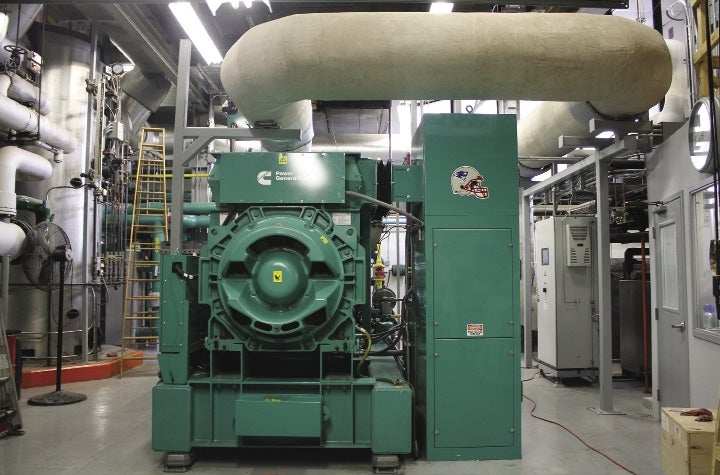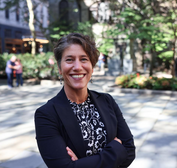Colleges: More prospective students checking schools’ energy efficiency
Gone are the days when high school students chose a college solely based on the quality of sports and academic programs, and perhaps even the quality of the party scene. It seems that millennials — the generation born between the early 1980s and early 2000s — also like their campuses to be energy efficient.
Albany-based Clough Harbour & Associates (CHA), a full-service engineering firm that works with higher education clients among others, detailed rising demand for “green” college and university campuses among prospective students in its recent report, “The Changing Energy Landscape and its Effect on College Campuses in the Northeast.”
“Colleges and universities are now seeing prospective students from the millennial generation consider factors beyond the traditional school rankings when making enrollment decisions,” the report states.
The report goes on to cite a recent survey conducted by the College of William and Mary in Williamsburg, Va., of 1,700 students from a diverse group of campuses that showed current freshmen (13.5 percent) were more than twice as likely to select a college based on sustainability factors than the freshman class three years earlier (6.5 percent) did.
CHA also cited a survey conducted by The Princeton Review, “The College Hopes and Worries Survey,” which in 2014 found that 61 percent of respondents' decisions about where to go to college were at least somewhat influenced by a school's commitment to the environment.
Steve Wilson, vice president of urban planning at CHA, said colleges and universities are getting the message. Showcasing green initiatives on campus tours has become an important part of selling the school to incoming freshmen, according to Wilson.
“It's all part of the package they present in attracting students,” Wilson said.
That's certainly true in Central Massachusetts, where sustainability initiatives aimed at reducing carbon footprints are thriving. Schools like Worcester Polytechnic Institute, Clark University and Framingham State University (FSU) have been recognized by the Princeton Review and Sierra Magazine for their efforts to be green.
But if you ask those leading the charge at area campuses, they'll say their commitment to running sustainable campuses is, first and foremost, about doing the right thing.
‘The right thing to do’
Carl Hakansson, a geography professor specializing in environmental studies and law at FSU, was the lead author of the university's Climate Action Plan and has guided efforts to transform FSU into a leading green school. The Princeton Review recognized FSU as a Green College in its most recent publications.
“When we started, we started because it was the right thing to do,” Hakansson said.
FSU, of course, was also operating under a directive issued by Gov. Deval Patrick in 2007 that charged all state agencies with taking measures to reduce their carbon footprints. The campus responded by converting its power plant from oil to natural gas, which reduced FSU's carbon footprint 33 percent, Hakansson said. A new, LEED-certified dormitory was also built, and efforts to increase the campus recycling rate were ramped up.
“(Sustainability has) really become a part of the vernacular at the school, where it was, in some ways, a novelty five years ago,” Hakansson said.
The ways in which campuses earn a reputation for being green vary. For example, much of the work done to achieve green status at Clark University have been grassroots efforts led by students. Jenny Isler, Clark's sustainability coordinator, said that has to do with the type of students who attend Clark.
They tend to be mindful of how they affect the world around them, and have brought composting to residence halls and launched a student-run thrift store that keeps old furniture, clothing and other items out of landfills, among other ventures. The school itself has been retrofitting buildings since the late 1990s, and in January, a new co-generation engine came online, enabling Clark to produce heat, air conditioning and electricity with one machine.
“It's not just the students. The parents care too,” said Isler, noting that parent opinions matter because they're typically sending the tuition checks.
Cost-savings agent too
Speaking of money, sustainability also helps the bottom line.
Isler said it makes financial sense to implement green initiatives. For example, she said, Clark saves as much as $5,000 a year by selling composted food waste. Hakansson echoed that sentiment. He didn't provide specific figures, but said revamping FSU's power plant “saved a ton of money.” And that's an important factor when a school considers a green project.
“It has to show that it pays for itself,” Hakansson said.
Emily Sullivan, a senior majoring in environmental studies at the College of the Holy Cross in Worcester, is enlightened by the emphasis colleges and universities are placing on being green.
Sullivan, who helped publish a guide to green living for Holy Cross students and faculty, and plans to enter the field after graduation, said her peers have grown up on a green philosophy since kindergarten, and higher education is responding to that.
“I guess people are realizing the (importance) of it, and that's a good thing,” Sullivan said.
















0 Comments